Best Practices for Managing Project Escalations
Last updated: June 23, 2024 Read in fullscreen view
- 01 Aug 2024
 The Standish Group report 83.9% of IT projects partially or completely fail 150/1772
The Standish Group report 83.9% of IT projects partially or completely fail 150/1772 - 13 Apr 2024
 Lessons on Teamwork and Leadership from Chinese story book "Journey to the West" 41/949
Lessons on Teamwork and Leadership from Chinese story book "Journey to the West" 41/949 - 02 Nov 2021
 What is Terms of Reference (ToR)? 23/1466
What is Terms of Reference (ToR)? 23/1466 - 18 Oct 2020
 How to use the "Knowns" and "Unknowns" technique to manage assumptions 21/989
How to use the "Knowns" and "Unknowns" technique to manage assumptions 21/989 - 01 Oct 2020
 Fail fast, learn faster with Agile methodology 13/973
Fail fast, learn faster with Agile methodology 13/973 - 03 Apr 2022
 Microsoft Solutions Framework (MSF) 12/1157
Microsoft Solutions Framework (MSF) 12/1157 - 12 Oct 2022
 14 Common Reasons Software Projects Fail (And How To Avoid Them) 10/504
14 Common Reasons Software Projects Fail (And How To Avoid Them) 10/504 - 18 Dec 2023
 The Cone of Uncertainty in Scrum & Requirement Definition 8/643
The Cone of Uncertainty in Scrum & Requirement Definition 8/643 - 19 Oct 2021
 Is gold plating good or bad in project management? 7/754
Is gold plating good or bad in project management? 7/754 - 18 Oct 2021
 Key Elements to Ramping Up a Large Team 7/1108
Key Elements to Ramping Up a Large Team 7/1108 - 10 Nov 2022
 Poor Code Indicators and How to Improve Your Code? 7/213
Poor Code Indicators and How to Improve Your Code? 7/213 - 08 Nov 2022
 4 tips for meeting tough deadlines when outsourcing projects to software vendor 6/254
4 tips for meeting tough deadlines when outsourcing projects to software vendor 6/254 - 06 Feb 2021
 Why fail fast and learn fast? 6/375
Why fail fast and learn fast? 6/375 - 13 Oct 2021
 Outsourcing Software Development: MVP, Proof of Concept (POC) and Prototyping. Which is better? 6/424
Outsourcing Software Development: MVP, Proof of Concept (POC) and Prototyping. Which is better? 6/424 - 01 Mar 2023
 Bug Prioritization - What are the 5 levels of priority? 6/207
Bug Prioritization - What are the 5 levels of priority? 6/207 - 01 Sep 2022
 Facts Chart: Why Do Software Projects Fail? 6/540
Facts Chart: Why Do Software Projects Fail? 6/540 - 28 Jul 2022
 POC, Prototypes, Pilots and MVP: What Are the Differences? 6/606
POC, Prototypes, Pilots and MVP: What Are the Differences? 6/606 - 31 Aug 2022
 What are the best practices for software contract negotiations? 5/215
What are the best practices for software contract negotiations? 5/215 - 05 Mar 2021
 How do you minimize risks when you outsource software development? 5/317
How do you minimize risks when you outsource software development? 5/317 - 07 Oct 2025
 Case Study: Using the “Messaging House” Framework to Build a Digital Transformation Roadmap 5/45
Case Study: Using the “Messaging House” Framework to Build a Digital Transformation Roadmap 5/45 - 14 Oct 2021
 Advantages and Disadvantages of Time and Material Contract (T&M) 4/789
Advantages and Disadvantages of Time and Material Contract (T&M) 4/789 - 06 Mar 2021
 4 things you need to do before getting an accurate quote for your software development 4/615
4 things you need to do before getting an accurate quote for your software development 4/615 - 12 Dec 2021
 Zero Sum Games Agile vs. Waterfall Project Management Methods 4/374
Zero Sum Games Agile vs. Waterfall Project Management Methods 4/374 - 20 Jul 2022
 Software Myths and Realities 4/797
Software Myths and Realities 4/797 - 04 Oct 2022
 Which ERP implementation strategy is right for your business? 4/278
Which ERP implementation strategy is right for your business? 4/278 - 08 Jan 2024
 Ask Experts: Explicitation/Implicitation and Elicitation; two commonly used but barely unraveled concepts 4/275
Ask Experts: Explicitation/Implicitation and Elicitation; two commonly used but barely unraveled concepts 4/275 - 01 Dec 2023
 Laws of Project Management 3/249
Laws of Project Management 3/249 - 07 Jul 2022
 Managing Project Execution Terms 3/379
Managing Project Execution Terms 3/379 - 18 Aug 2022
 What are the consequences of poor requirements with software development projects? 3/242
What are the consequences of poor requirements with software development projects? 3/242 - 09 Mar 2022
 Consultant Implementation Pricing 3/184
Consultant Implementation Pricing 3/184 - 16 Feb 2021
 Choose Outsourcing for Your Non Disclosure Agreement (NDA) 3/150
Choose Outsourcing for Your Non Disclosure Agreement (NDA) 3/150 - 16 Apr 2021
 Insightful Business Technology Consulting at TIGO 3/376
Insightful Business Technology Consulting at TIGO 3/376 - 31 Oct 2021
 Tips to Fail Fast With Outsourcing 3/375
Tips to Fail Fast With Outsourcing 3/375 - 18 Jul 2021
 How To Ramp Up An Offshore Software Development Team Quickly 3/516
How To Ramp Up An Offshore Software Development Team Quickly 3/516 - 08 Oct 2022
 KPI - The New Leadership 3/557
KPI - The New Leadership 3/557 - 05 Sep 2023
 The Cold Start Problem: How to Start and Scale Network Effects 3/167
The Cold Start Problem: How to Start and Scale Network Effects 3/167 - 10 Apr 2024
 The Parking Lot Method: Unlocking a Simple Secret to Supercharge Your Productivity 3/403
The Parking Lot Method: Unlocking a Simple Secret to Supercharge Your Productivity 3/403 - 26 Sep 2024
 Successful Project Management Techniques You Need to Look Out For 2/368
Successful Project Management Techniques You Need to Look Out For 2/368 - 01 May 2024
 Warren Buffett’s Golden Rule for Digital Transformation: Avoiding Tech Overload 2/188
Warren Buffett’s Golden Rule for Digital Transformation: Avoiding Tech Overload 2/188 - 05 Jun 2023
 Fractional, Part-Time (virtual) or Interim CTO: Who Will Cover Your Business Needs? 2/109
Fractional, Part-Time (virtual) or Interim CTO: Who Will Cover Your Business Needs? 2/109 - 04 Oct 2021
 Product Validation: The Key to Developing the Best Product Possible 2/295
Product Validation: The Key to Developing the Best Product Possible 2/295 - 28 Dec 2021
 8 types of pricing models in software development outsourcing 2/417
8 types of pricing models in software development outsourcing 2/417 - 28 Oct 2022
 Build Operate Transfer (B.O.T) Model in Software Outsourcing 2/361
Build Operate Transfer (B.O.T) Model in Software Outsourcing 2/361 - 23 Sep 2021
 INFOGRAPHIC: Top 9 Software Outsourcing Mistakes 2/411
INFOGRAPHIC: Top 9 Software Outsourcing Mistakes 2/411 - 13 Dec 2020
 Move fast, fail fast, fail-safe 2/292
Move fast, fail fast, fail-safe 2/292 - 17 Feb 2022
 Prioritizing Software Requirements with Kano Analysis 2/280
Prioritizing Software Requirements with Kano Analysis 2/280 - 10 Apr 2021
 RFP vs POC: Why the proof of concept is replacing the request for proposal 2/254
RFP vs POC: Why the proof of concept is replacing the request for proposal 2/254 - 07 Jul 2021
 The 5 Levels of IT Help Desk Support 2/380
The 5 Levels of IT Help Desk Support 2/380 - 15 May 2022
 20 Common Mistakes Made by New or Inexperienced Project Managers 2/247
20 Common Mistakes Made by New or Inexperienced Project Managers 2/247 - 14 Jun 2022
 Example and Excel template of a RACI chart in Software Development 2/707
Example and Excel template of a RACI chart in Software Development 2/707 - 12 Aug 2022
 What is End-to-end project management? 2/382
What is End-to-end project management? 2/382 - 02 May 2022
 What Is RAID in Project Management? (With Pros and Cons) 2/734
What Is RAID in Project Management? (With Pros and Cons) 2/734 - 10 Dec 2023
 Pain points of User Acceptance Testing (UAT) 2/416
Pain points of User Acceptance Testing (UAT) 2/416 - 24 Nov 2023
 The project management paradox: Achieving MORE by doing LESS 2/193
The project management paradox: Achieving MORE by doing LESS 2/193 - 07 Dec 2023
 12 project management myths to avoid 1/167
12 project management myths to avoid 1/167 - 09 Feb 2023
 The Challenge of Fixed-Bid Software Projects 1/191
The Challenge of Fixed-Bid Software Projects 1/191 - 26 Dec 2023
 Improving Meeting Effectiveness Through the Six Thinking Hats 1/205
Improving Meeting Effectiveness Through the Six Thinking Hats 1/205 - 05 Jan 2024
 Easy ASANA tips & tricks for you and your team 1/180
Easy ASANA tips & tricks for you and your team 1/180 - 11 Jan 2024
 What are the Benefits and Limitations of Augmented Intelligence? 1/434
What are the Benefits and Limitations of Augmented Intelligence? 1/434 - 07 Oct 2022
 Digital Transformation: Become a Technology Powerhouse 1/216
Digital Transformation: Become a Technology Powerhouse 1/216 - 22 May 2022
 What are common mistakes that new or inexperienced managers make? 1/243
What are common mistakes that new or inexperienced managers make? 1/243 - 30 Oct 2022
 How Much Does MVP Development Cost in 2023? 1/170
How Much Does MVP Development Cost in 2023? 1/170 - 27 Jan 2020
 Should a project manager push developers to work more hours due to mistakes of manager schedule setting? 1/412
Should a project manager push developers to work more hours due to mistakes of manager schedule setting? 1/412 - 19 Apr 2021
 7 Most Common Time-Wasters For Software Development 1/525
7 Most Common Time-Wasters For Software Development 1/525 - 01 Mar 2024
 10 Project Management Myths 1/120
10 Project Management Myths 1/120 - 01 May 2023
 CTO Interview Questions 1/296
CTO Interview Questions 1/296 - 12 Aug 2024
 Understanding Google Analytics in Mumbai: A Beginner's Guide 1/84
Understanding Google Analytics in Mumbai: A Beginner's Guide 1/84 - 12 Mar 2024
 How do you create FOMO in software prospects? /127
How do you create FOMO in software prospects? /127 - 21 Jun 2024
 Dead Horses and the Escalation of Commitment /123
Dead Horses and the Escalation of Commitment /123 - 01 Aug 2022
 Is planning "set it and forget it" or "set it and check it"? /264
Is planning "set it and forget it" or "set it and check it"? /264 - 06 Mar 2024
 [SemRush] What Are LSI Keywords & Why They Don‘t Matter /131
[SemRush] What Are LSI Keywords & Why They Don‘t Matter /131 - 17 Mar 2025
 IT Consultants in Digital Transformation /62
IT Consultants in Digital Transformation /62 - 10 Jul 2025
 Building AI-Driven Knowledge Graphs from Unstructured Data /111
Building AI-Driven Knowledge Graphs from Unstructured Data /111 - 15 Aug 2025
 Quantum Technology: Global Challenges and Opportunities for Innovators /56
Quantum Technology: Global Challenges and Opportunities for Innovators /56 - 02 Jun 2024
 Reviving Ancient Wisdom: The Spiritual Side of Project Management /204
Reviving Ancient Wisdom: The Spiritual Side of Project Management /204 - 17 Oct 2021
 Does Fast Tracking increase project cost? /348
Does Fast Tracking increase project cost? /348 - 19 Oct 2021
 Software development life cycles /628
Software development life cycles /628 - 13 Jan 2020
 Quiz: Test your understanding project cost management /568
Quiz: Test your understanding project cost management /568 - 06 Nov 2019
 How to Access Software Project Size? /236
How to Access Software Project Size? /236 - 09 Jan 2022
 How to Bridge the Gap Between Business and IT? /163
How to Bridge the Gap Between Business and IT? /163 - 07 Aug 2022
 Things to Consider When Choosing a Technology Partner /249
Things to Consider When Choosing a Technology Partner /249 - 03 Nov 2022
 Top questions and answers you must know before ask for software outsourcing /264
Top questions and answers you must know before ask for software outsourcing /264 - 02 Dec 2021
 3 Ways to Avoid Scope Creep in IT Consulting /192
3 Ways to Avoid Scope Creep in IT Consulting /192 - 30 Nov 2023
 Project Managers, Focus on Outcomes — Not Deliverables /143
Project Managers, Focus on Outcomes — Not Deliverables /143 - 06 Jun 2022
 Change Management at the Project Level /292
Change Management at the Project Level /292 - 09 May 2022
 Build one to throw away vs Second-system effect: What are differences? /297
Build one to throw away vs Second-system effect: What are differences? /297 - 10 May 2022
 Levels of Teamwork /180
Levels of Teamwork /180 - 03 Jan 2023
 Organizing your agile teams? Think about M.A.T (Mastery, Autonomy, Purpose) /333
Organizing your agile teams? Think about M.A.T (Mastery, Autonomy, Purpose) /333 - 02 Nov 2022
 Difference between Change Management and Project Management /216
Difference between Change Management and Project Management /216 - 20 Nov 2022
 Software Requirements Are A Communication Problem /233
Software Requirements Are A Communication Problem /233 - 14 Mar 2024
 Why should you opt for software localization from a professional agency? /117
Why should you opt for software localization from a professional agency? /117 - 01 Mar 2024
 (AI) Artificial Intelligence Terms Every Beginner Should Know /280
(AI) Artificial Intelligence Terms Every Beginner Should Know /280 - 01 Mar 2023
 How do you deal with disputes and conflicts that may arise during a software consulting project? /145
How do you deal with disputes and conflicts that may arise during a software consulting project? /145
Throughout any given initiative, project managers must deal with issues that are sure to arise. Some are solvable within the project organization, with or without the project manager’s influence. Others however — especially those that could affect the outcome of a project — go beyond a project manager’s range of influence and authority.
Such major issues and risks can lead to escalations, which require special handling and management.
Various project management guidelines and specialized literature insufficiently cover the escalation management domain.
Escalation means trouble — so it’s a word very few people want to hear about. It also means that a higher authority will need to be called up to take action before it is too late.
When necessary, and if done in a timely and appropriate manner, escalation management can help a project manager solve issues outside of their authority or influence.
Read On: Dead Horses and the Escalation of Commitment
Here are some tips and tricks for project managers to better deal with escalations.
1. Be Prepared
From the project outset, define a clear escalation path and mechanism. For instance, establish an escalation committee (e.g., your sponsors or upper management board) and agree on escalating major issues when necessary and bypassing certain hierarchy levels in order to escalate faster.
Don’t overdo it! You should not escalate every encountered issue—only escalate major issues that have considerable impacts.
2. Assess and Qualify the Risk
Is it serious enough to escalate? Is there anything else you can do to avoid an escalation? Is it the right time to escalate?
Certainly, in order to be effective, the escalation should be raised in a timely manner. Therefore, neither should you exaggerate with going through an elaborated risk assessment, nor should you wait too long until raising the escalation (e.g., do not wait until the next reporting period is due).
3. Communicate the Escalation
After you’ve done everything you could have to prevent the escalation (you raised awareness, you communicated, you have pushed and pulled), it is time to escalate!
To escalate effectively and efficiently, first keep a calm and clear head. Then, follow these tips:
- Escalate via the channel that is most appropriate for your project context. Ideally, the escalation should be communicated in a face-to-face meeting or call. Emails can be the most ineffective escalation tools, because they can delay the resolution if the emails are not handled in a timely manner. Emails also can lead to misunderstandings if the context is not well understood. Additionally, they can lead to a deadlock if sent to multiple and unnecessary individuals or when it is unclear who the targeted person is for taking action. In short: Avoid escalations via email.
- Avoid getting personal and refrain from finger pointing. Focus on the issue at hand. This should be communicated and addressed objectively.
- Explain the major issue and its implications. Keep it short and simple, so that everyone requested to help you can understand.
- Explain what you did to avoid the issue and escalation. Again, keep it short. Otherwise, you will end up in endless apologies.
- If possible, make a proposal with two or three resolution options. Explain their potential effect on the issue at hand and ideally make a recommendation on which options to go for.
4. Follow Up
Generally, every escalation requires some resolution time for when the project manager and the project team will implement the decisions agreed upon by the escalation board.
You will need to regularly inform your escalation committee with status and progress updates until the risk and problem are completely resolved. And, after getting back on track, you should conduct a lessons-learned exercise with your project team to learn and grow from the encountered crisis situation.
Would you agree? How are you managing escalations in your projects?








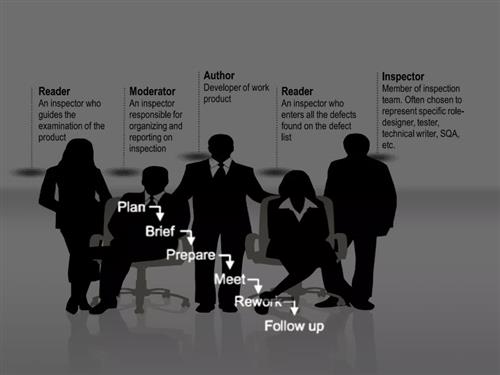
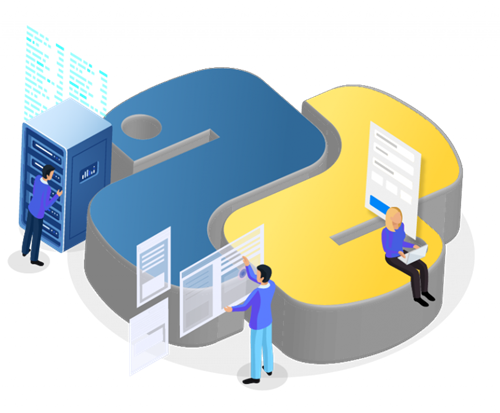




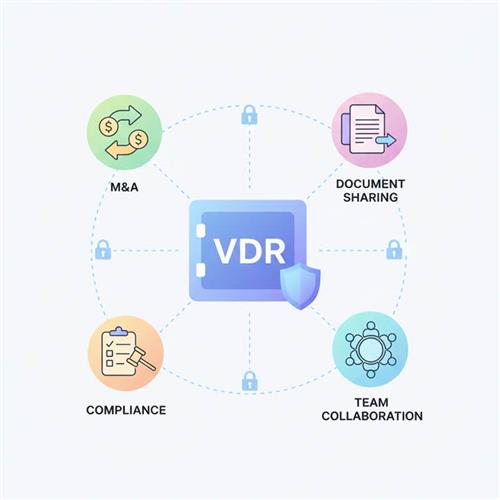


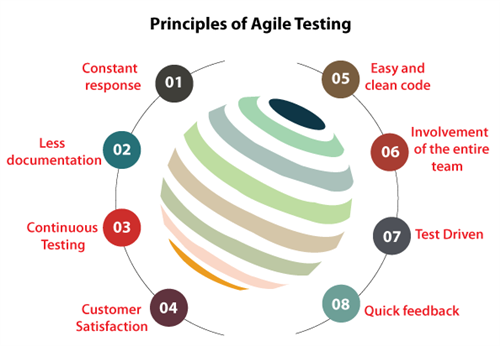







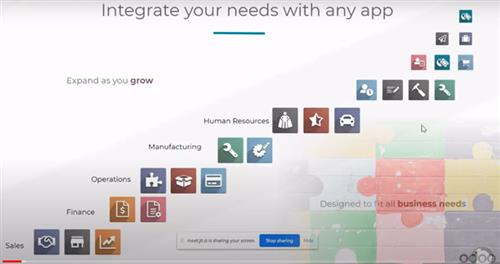









 Link copied!
Link copied!